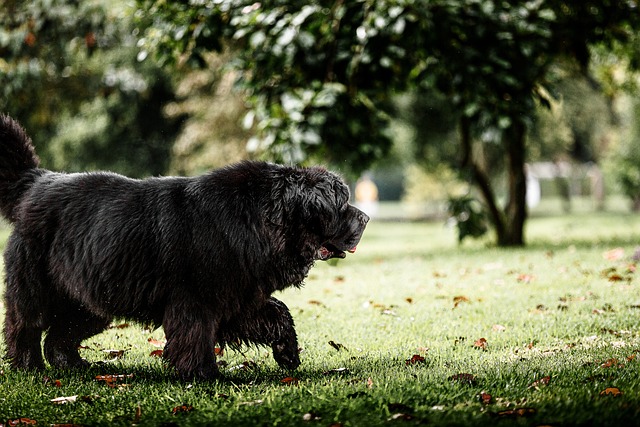Traditional heating methods for homes and pets, like electric heaters in dog houses, are energy-inefficient and environmentally damaging due to greenhouse gas emissions. This prompts a shift towards eco-friendly alternatives such as solar, geothermal, biomass, and heat pump technologies. Heated Dog Houses, once criticized for their environmental impact, can now benefit from these renewable solutions, providing pet comfort while minimizing carbon footprints. Geothermal heating, heat pumps, solar collectors, efficient stoves, and proper insulation all contribute to sustainable warmth, reducing energy bills and preserving natural resources. Regular maintenance ensures these eco-friendly heated dog houses are safe, effective, and long-lasting.
Looking for eco-friendly heating choices, especially for your pet’s comfort without environmental harm? This guide explores sustainable solutions beyond traditional fossil fuels. From renewable energy sources like geothermal and solar power to biomass stoves, we delve into efficient options for both homes and, specifically, heated dog houses. Discover how these alternatives minimize impact while keeping you and your four-legged friend warm during cold nights.
Understanding the Impact of Heating on the Environment

Heating systems are a significant contributor to environmental impact, with traditional methods often relying on non-renewable energy sources and emitting harmful greenhouse gases. Understanding this impact is crucial when considering eco-friendly alternatives, such as heated dog houses. In the context of residential heating, transitioning from fossil fuel-based systems to renewable options like solar or geothermal heat can significantly reduce a home’s carbon footprint.
Heated dog houses, while seemingly niche, exemplify this trend towards sustainability in the built environment. By incorporating eco-friendly heating solutions, not only are we mitigating our environmental impact but also ensuring the well-being of our pets. A heated dog house designed with renewable energy principles in mind can offer a comfortable and safe space for animals, showcasing that environmentally conscious choices can benefit both people and their loved ones, four-legged or otherwise.
The Traditional Heated Dog House: A Common Choice and Its Drawbacks

The traditional heated dog house is a common choice for pet owners looking to provide comfort and warmth for their furry friends during colder months. These structures, often equipped with electric heating pads or space heaters, aim to replicate a cozy indoor environment outdoors. However, this conventional approach has several drawbacks. Firstly, relying on electric power can be expensive and contribute to a significant carbon footprint, undermining the eco-friendly intent of the dog house. Secondly, such heated solutions may not be as energy-efficient, leading to higher utility bills for homeowners while potentially causing environmental damage.
Moreover, traditional heated dog houses might not offer adequate insulation, resulting in a less than ideal microclimate for dogs. This can lead to excessive energy usage to maintain warmth, creating a cycle of high consumption and potential environmental strain. With growing awareness of sustainable living, pet owners are increasingly seeking eco-friendly alternatives that balance the comfort of their pets with conservation efforts.
Renewable Energy Sources for Eco-Friendly Heating

Renewable energy sources offer a plethora of eco-friendly heating options, transforming the way we keep our spaces warm and cozy while minimizing environmental impact. Solar power, harnessed through solar collectors or panels, can efficiently heat water for radiators, underfloor systems, or even pool heating. Wind energy, captured by turbines, is another sustainable choice; excess electricity generated can be stored for heating during calmer periods. Geothermal heat pumps, tapping into the Earth’s constant temperature, provide a reliable and efficient method of heating and cooling.
Imagine a heated dog house powered by these renewable sources—a small-scale application of these technologies. By embracing such eco-friendly heating choices, we not only reduce our carbon footprint but also contribute to a more sustainable future, ensuring comfortable living spaces while preserving the planet’s resources for generations to come.
Geothermal Heating: A Sustainable Solution for Your Home (and Dog House)

Geothermal heating is a sustainable and efficient solution for your home, and surprisingly, even your dog house! This eco-friendly method utilizes the Earth’s constant temperature to heat and cool your living spaces, making it an excellent alternative to traditional heating systems. By tapping into the underground temperature, geothermal heat pumps can provide consistent warmth during chilly months and act as a cooler during hotter seasons, all while reducing your carbon footprint.
Imagine a cozy heated dog house that remains comfortable year-round, thanks to this green technology. Geothermal systems are highly energy-efficient, often powered by renewable energy sources like solar or wind power, further minimizing environmental impact. With its ability to provide consistent temperature control and lower energy bills, geothermal heating is a game-changer for both modern homes and dog houses, ensuring comfort and sustainability simultaneously.
Heat Pumps: An Efficient and Versatile Option

Heat pumps are a highly efficient and versatile eco-friendly heating option, offering an excellent alternative to traditional furnaces. They work by transferring heat from one location to another, extracting even small amounts of heat from the outdoors and amplifying it for indoor use. This process not only reduces energy consumption but also provides a consistent and comfortable temperature throughout the year.
One unique application of heat pumps is in heated dog houses, ensuring your furry friends remain cozy during colder months. By using renewable energy sources, heat pumps can create a warm sanctuary for dogs, mimicking the comfort of their natural environments. This innovative use highlights the adaptability of heat pump technology, making it a popular choice for both residential and commercial spaces seeking sustainable heating solutions.
Solar Heating Systems: Harnessing the Power of the Sun

Solar heating systems are an innovative and eco-friendly way to keep your spaces warm, even in the coldest of weather conditions. By harnessing the power of the sun, these systems provide a sustainable alternative to traditional heating methods, offering both energy efficiency and cost savings. Imagine a heated dog house that relies on solar panels, ensuring Fido’s comfort without contributing to environmental strain. This technology uses sunlight to generate heat, which can then be stored for use during cloudy days or evenings.
The process typically involves installing solar collectors on rooftops or in open areas, where they absorb the sun’s energy and convert it into usable heat. This heat can be distributed throughout a building via a network of pipes or used directly to warm water for various purposes, including radiators, underfloor heating, or even a cozy heated dog house. With their ability to provide clean, renewable energy, solar heating systems are an excellent choice for those seeking to reduce their carbon footprint and contribute to a greener future.
Biomas and Pellet Stoves: A Green Alternative for Cold Nights

Biomas and pellet stoves offer a green alternative for keeping your space warm during cold nights, even for those who consider building a heated dog house. Biomas, derived from organic materials like wood chips, sawdust, or agricultural waste, burn more efficiently than traditional firewood, reducing carbon emissions significantly. Pellet stoves, on the other hand, use compressed wood pellets as fuel, ensuring consistent heat output and minimal ash residue. These eco-friendly options are not only beneficial for the environment but also for your energy bills. They provide a cozy ambiance, much like a traditional fireplace, without the hassle of constant refueling.
Considered to be more efficient and cleaner than firewood stoves, biomas and pellet stoves are an excellent choice for homeowners looking to reduce their carbon footprint while maintaining comfort during winter. Their ease of use and modern design appeal to those seeking a stylish addition to their living spaces, even when considering solutions for keeping a heated dog house cozy.
Insulation and Energy-Efficient Design: Complementing Eco-Friendly Heating Choices

Eco-friendly heating choices go hand in hand with proper insulation and energy-efficient design. When considering a heated dog house, for instance, it’s not just about providing warmth; it’s about doing so responsibly. Effective insulation traps heat, reducing the workload on heating systems and minimizing energy consumption. By using materials like recycled fibers or natural insulators like sheep’s wool, you can create a cozy environment while preserving the planet.
Energy-efficient design further enhances the eco-friendliness of these choices. Features such as double-glazed windows, weatherstripped doors, and smart thermostats enable better temperature control, ensuring heat is only used when necessary. This not only reduces carbon footprint but also lowers heating bills, making eco-friendly heating options both beneficial for the environment and your wallet.
Maintenance and Longevity: Ensuring Your Heated Dog House Stays Eco-Conscious

The eco-friendliness of a heated dog house doesn’t stop at its initial installation. Regular maintenance is key to preserving its environmental benefits and extending its lifespan. Keeping the heating element clean and well-insulated ensures efficient energy use, reducing your carbon footprint. A simple routine includes periodic checks for any signs of damage or wear, especially in the insulation and wiring, which are crucial for safety and effectiveness.
Longevity is another advantage of choosing an eco-conscious heated dog house. With proper care, these structures can withstand various weather conditions for years, providing a consistent and comfortable environment for your pet without requiring frequent replacements. This longevity contributes to overall sustainability by minimizing waste and the need for new resources in manufacturing.
